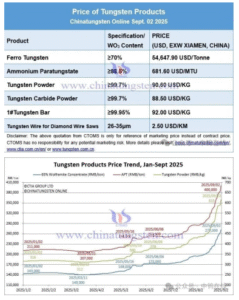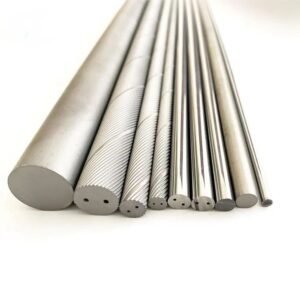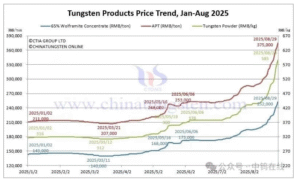Introduction
In modern manufacturing, hard alloy inserts play a critical role in improving machining efficiency, precision, and the overall performance of cutting tools. These tools, made primarily from tungsten carbide and cobalt, are widely known for their exceptional hardness, wear resistance, and ability to withstand high temperatures, making them ideal for a range of industrial applications. This article delves into the applications, advantages, and significant role hard alloy inserts play in cutting processes across industries.
Understanding Hard Alloy Inserts
Hard alloy inserts, also referred to as carbide inserts, are tools designed for cutting operations such as turning, milling, drilling, and grinding. The primary material used in these inserts is tungsten carbide (WC), a highly durable substance often combined with cobalt (Co) to improve the material’s toughness. This combination provides an optimal balance of hardness and resistance to wear while ensuring the insert retains sufficient toughness to resist breakage under high impact.
Key Advantages of Hard Alloy Inserts
- High Hardness The hardness of carbide inserts is one of their most notable characteristics. Tungsten carbide’s hardness exceeds that of most materials, which allows it to maintain sharp cutting edges for prolonged periods, even when working with tough metals like steel and stainless steel. This results in fewer tool changes and lower maintenance costs.
- Exceptional Wear Resistance Hard alloy inserts exhibit excellent wear resistance, meaning they can withstand significant abrasive forces over extended periods. This feature is crucial in industries that require precise, long-lasting tools for machining hard materials, thus reducing downtime and improving productivity.
- High-Temperature Resistance Carbide inserts can function at extremely high temperatures, often exceeding 1000°C, which is a significant advantage during high-speed cutting processes. The ability to retain hardness and maintain cutting effectiveness at these temperatures means the inserts can operate effectively without deforming or losing their cutting efficiency, even in high-speed or high-heat conditions.
- Improved Cutting Efficiency Due to their hardness and wear resistance, carbide inserts can cut through tougher materials with greater speed and precision compared to other tool materials. This leads to faster machining times, higher production rates, and greater cost-efficiency in manufacturing processes. Additionally, the ability to work at higher speeds without losing precision allows for reduced cycle times and increased overall throughput.
- Precision and Surface Finish The sharpness and wear resistance of carbide inserts ensure a high-quality surface finish and tight tolerances during machining. This is especially critical in industries that require parts to be manufactured with minimal dimensional deviations, such as the aerospace, automotive, and medical device industries.
Applications of Hard Alloy Inserts
The versatility of hard alloy inserts makes them suitable for a wide array of machining applications across various industries. Some of the most common applications include:
- Turning In turning operations, carbide inserts are used for shaping materials on a lathe machine. The high-speed cutting ability and wear resistance of carbide inserts make them particularly well-suited for turning operations that involve hard materials such as cast iron, steel, and even titanium alloys. These materials are often difficult to machine with other tools, but carbide inserts maintain sharp edges and ensure smooth, efficient cutting.
- Milling Milling operations involve rotating cutters to remove material from a workpiece, and carbide inserts are frequently employed in milling machines. Their ability to retain sharpness over prolonged use and their resistance to wear and heat make them ideal for cutting tough metals like stainless steel and alloyed materials. These inserts can handle both roughing and finishing operations with high precision.
- Drilling Carbide inserts are also commonly used in drilling operations, where they offer superior resistance to high temperatures and wear. Their sharp cutting edges allow for effective material removal, even in deep-hole drilling applications. Hard alloy inserts are used for drilling materials like steel, cast iron, and non-ferrous metals.
- Grooving and Profiling In grooving and profiling operations, carbide inserts are employed to create grooves, channels, and profiles in workpieces. The exceptional precision and stability of carbide inserts ensure that these operations are completed with high accuracy, meeting stringent requirements for dimensional tolerances and surface finishes.
Material Choices and Coating Technologies
The performance of carbide inserts can be further enhanced through the use of coatings. Common coatings include:
- TiN (Titanium Nitride): A coating that provides excellent wear resistance and reduces friction during cutting, resulting in longer tool life.
- TiAlN (Titanium Aluminum Nitride): This coating is ideal for high-temperature applications, as it helps to improve heat resistance and reduce wear.
- CVD Coating (Chemical Vapor Deposition): Provides inserts with high hardness and enhanced resistance to heat and wear.
- PVD Coating (Physical Vapor Deposition): Offers improved toughness and hardness for tools exposed to severe operating conditions.
Each coating is designed to optimize the performance of carbide inserts in specific machining environments, whether they involve high speeds, high temperatures, or abrasive materials.
Industries Benefiting from Hard Alloy Inserts
Several industries rely heavily on the performance of hard alloy inserts to maintain production efficiency and quality:
- Automotive Industry: Carbide inserts are used extensively in the machining of engine parts, transmission components, and other critical automotive parts.
- Aerospace: Due to the demanding requirements for precision and high-performance materials, carbide inserts are used in the machining of aircraft components, including turbine blades, landing gear, and engine parts.
- Oil and Gas: Carbide inserts are ideal for machining materials used in the oil and gas sector, where high heat, pressure, and abrasive forces are common.
- Medical Devices: In the medical field, carbide inserts are used for the precise manufacturing of surgical instruments, implants, and other critical components where precision is paramount.





